Amazing Animals #16 The Great White Shark
The Great White Shark, like my previously covered animal the Hyena, is an animal that has gained a bad reputation from a number of movies, the species is best known for its role as the bloodthirsty killing machine in the film Jaws, whilst I am under no illusion that they wouldn’t be capable of inflicting the damage seen in Jaws, they are far from mindless killing machines, and have earnt a wrongly deserved reputation.
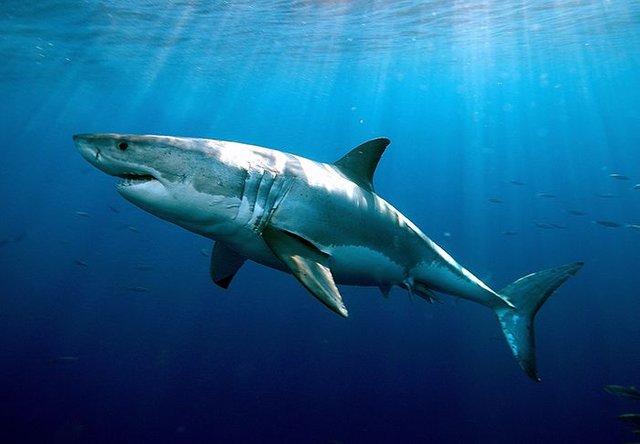
The Great White Shark is perhaps the most successful solitary predator on Earth, every part of their design is adapted for efficiency during the hunt, they are powerful, deadly and intelligent, a truly apex predator within their vast Oceanic realm.
Their Appearance
Quite frankly they look terrifying, the Great White Shark (Carcharodon carcharias) is arguably the largest species of macro-predatory fish alive today, they can grow to lengths of up to 6.1 metres and can weigh up to 3000 Kg’s, though on average they are smaller.
| Averages | Male | Female |
|---|---|---|
| Average Weight | 700 Kg | 1000 Kg |
| Average Length | 4 Meters | 4.9 Meters |
From this data we can see that the Great White Shark is a sexually dimorphic species of cartilaginous fish as the females are considerably larger than the Males when fully matured, aside from the size difference however they are similar in appearance.
Their name comes from their immense size as well as their colouration, they are a mottled grey colour on the top half of their body that breaks off into a pure white colour on their underside.
This colouration aids in turning one of the largest predators on earth in to also one of the stealthiest animals, their mottled appearance helps them to blend seamlessly in to their environment, when viewed from above their dark colour blends with the abyssal depths below, and when viewed from below their bright underside blends with the incoming light from above, when viewed from the side their entire outline appears broken and makes them difficult to distinguish, all of these factors make it difficult for unsuspecting prey to notice the Great White before it’s already too late.
The Great White Shark is easily recognisable by its large rigid and angular dorsal fin as well as their large crescent-shaped caudal and triangular pectoral fins, aside from these features the Great White Sharks secondary dorsal fin, pelvic fin and anal fin are significantly smaller and on some individuals can be difficult to spot when viewed from a distance.
They have fairly small black eyes located on the side of their head, these eyes lack a common adaptation in Sharks which is the Nictating membrane, this membrane covers the Sharks eyes when they are striking prey thus forming a protective layer, the Great White has developed a different adaptation, instead of the Nictating membrane the Great White has the ability to roll its pupils back in to its head to protect itself when striking, this effectively renders the shark blind during a bite.
Just in front of their pectoral fins they have 5 large and visible gill slits, this is a trait common in Shark species but is uncommon when viewing most fish, most fishes gills are covered by a layer called an Operculum which acts as a lid over the gills, most Sharks instead have an extra gill slight just behind their eyes known as a Spiracle, the Spiracle is an important addition to the Sharks anatomy that allows them to oxygenate when stationary.
Their Behaviour
The Great White Shark can be found off the coast of every single continent apart from Antarctica, despite their widespread populations very little is known about their social behaviour or social structure.
Research appears to show that they display a clear dominance hierarchy that is dictated by overall size, sex and territorial rights, larger specimens will have dominance over smaller ones, females will always have dominance over males, and migratory specimens will be outranked by resident individuals.
Despite their size and menacing appearance they appear to very rarely inflict harm on one another and will more often than not resolve conflicts with displays and visual rituals, in the event that a dispute goes unsolved the more dominant individual may give a test bite to move the Shark on, their reluctance for violence likely lies in the high chance of fatal injuries being inflicted to both Sharks were they to engage.
Great Whites are one of a few species of shark that occasionally lift their head above the surface of the water to observe prey, it is theorised that they may also engage in this behaviour as a means for picking up scents, as smells travel faster through air than water the Great White may have learnt that it will be able to detect a feeding opportunity faster using this method.
Whilst the majority of Great Whites are solitary creatures that may travel thousands of kilometres throughout the year, there are some that prefer to coexist in small groups and may even engage in the formation of stable clans, with one example being a hunt site off of Seal Island, stable clans of 2-6 individuals have been cited and their behaviour has been compared to that of a Wolfpack, where there is one dominant Alpha and then subsequent lesser ranks below.
Previously it was thought that Great Whites reached sexual maturity at the age of 15 years old, whereas now, new research has led to a much higher estimation, with researchers stating that Males likely reach sexually maturity at 26 years of age, and females may not reach it until they are 33.
This poses a significant change of opinion regarding their lifespan, and it is now believed from studies of their vertebral growth ring count that they can live to much older ages than previously believed, with males living for 70 years and females for just over 40.
These newly discovered factors pose significant issue for the Great White as such a long time before breeding viability means the species are at risk from threats such as overfishing and climate change.
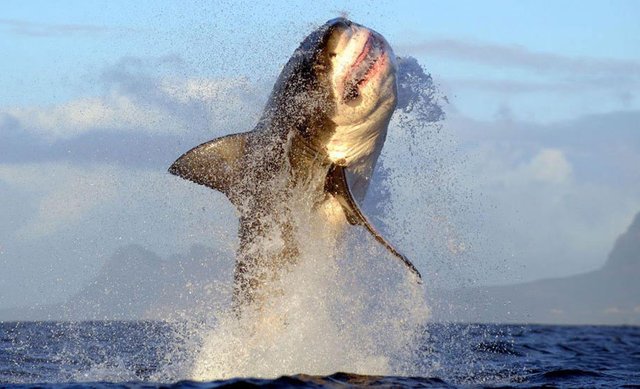
The Most Magnificent Jaws in Nature
Being the largest macro-predatory Fish alive today you would expect them to have an impressive set of teeth, and they do not disappoint in this department!
The Great White Sharks jaws are truly massive; they can measure up to 1.2 metres in width and are capable of opening to a size just as large, within their large mouths they have up to 300 triangular serrated and razor-sharp teeth that can each measure 2-3 inches in length.
Unlike most animals their teeth do not grow in sockets, but instead grow within a groove located on the inside of the jaw, the Sharks cartilaginous jaw functions similar to a treadmill and they are constantly replacing their teeth, their teeth exist in rows of 5-15, and gradually as the Shark ages or loses teeth through biting the rows are pushed forward resulting in the older/dropped teeth being replaced by the newer rows, it’s estimated that in very old specimens they can replace as many as 30,000 teeth in their lifetime!
As the Shark has no bones within its body you can imagine their anatomy as a whole is quite alien compared to our own, and you would be right, their jaws are not attached to their cranium and therefore the skull does not act a supporting structure, the jaws are instead attached to a crystalline structure known as Tesserae, the Tesserae are effectively tiny hexagonal crystalline blocks formed from Calcium salts, they are woven together and form into plates.
In most Shark species only one Tesserae plate will be present, but in larger species such as the Great White they can have as many as five plates, there is an advantage to this connection as it allows the Great White to have a unique predatory advantage seen only in Sharks.
In most animals the lower jaw is movable and the upper jaw is fixed in its position, Great Whites and other Sharks do not have this trait and instead are able to thrust their entire mouth forward when attacking their prey, this can mitigate the chance of the Great White failing to grab its target.
So the Great White has all the tools in its arsenal to make it a feared predator, all it needs now is some clamping force, unluckily for its prey it has this in abundance.
Measuring the clamping force of a Great White Shark is not an easy task, for one you need to have a sensor that is robust enough to survive being clamped on by 3 rows of saw-like teeth, and secondly you need to find an ideal specimen, to gain a full understanding of just how powerful a shark bite can be it would be preferable to find the largest specimen, sadly the ocean is large and this is a difficult task.
So instead we revert to computer modelling, in 2008 a team of Scientists conducted an experiment to determine the bite pressure of the world’s largest ever reliably recorded Great White Shark which measured 6.4 metres in length and weighed a little over 3200 Kg’s, the results of the simulation indicated a specimen of that size would be able to exert a bite force of 4095 PSI, which would comfortably sit the Great White in second place for the strongest bite on Earth, second only to the Nile Crocodile.
How good are their senses?
Sharks are quite the rarity in nature as all six of their available senses are highly refined and effective; the six senses a Great White possess are smell, hearing, touch, taste, sight and electromagnetism.
Great Whites have a highly adapted sense of smell, a fact known by most who have read that they are able to detect even the minutest volumes of blood in a body of water, this is true, and they are capable of smelling blood or carrion at distances of up to half a mile, they can detect scents from even further away when smelling the air above the ocean providing the winds are blowing in the right direction.

Their eyesight is strangely quite good, on a fundamental level they have quite similar eyes to Humans, with an Iris and Pupil that are able to control the amount of light passed through and they also have lenses to help them focus, as such the Shark can see objects at distances of over 100 feet when underwater.
The one sense most people wouldn’t associate with the Great White Shark is hearing, however, it is arguably their most well-adapted sense, they don’t have external ears but instead possess two tiny holes on the top of their head known as Endolymphatic pores, these pores are linked to fluid filled ducts that are able to carry soundwaves, thus giving the Great White an internal sound system, as such they are able to hear sounds from well over a kilometre when underwater.
Along the length of the Great Whites body they have a series of tubes called lateral lines, within the tubes is an array of sensory organs that function similarly to our nerve endings. The Great Whites lateral lines are so well adapted that they are able to sense vibrations in the water, thus functioning as a natural motion detector.
Like all Sharks the Great White also possesses a sense of electroreception, around the Great White snout and lower jaws are hundreds of tiny open pores that are collectively called “ampullae de Lorenzini”, the pores are filled with a jelly-like substance that surround cells known as Cilia.
We have Cilia within our ears that detect sound waves before sending a signal to brain; the Great Whites Cilia detect electrical currents. Every muscle movement made by an animal produces a small electrical current; therefore the Great White is able to detect movement from all angles at close proximities.
Amazing Facts
- The Great White Shark is for the most part an apex predator, though, on rare occasions pods of Orca have been observed hunting average sized specimens, mainly for their nutritious Liver.
About their Liver, the Great White Shark has one of the largest Livers in relation to its overall size of any animal in the Animal Kingdom; it can weigh as much as 30% of its overall body weight.
The earliest known evidence for the Great White Sharks existence is 16 million years old, though some researchers believe the species to be far older.
The largest Great White Shark ever captured on film was recorded in 2014, she was found off the coast of Mexico and was estimated to be 6.1 metres in length, and she was nicknamed “Deep Blue”
To maintain their immense size the average Great White Shark will consume around 11,000 Kg’s of food, their diet is made up of a wide array of animals including but not limited to Seals, Sea Lions, Sea Turtles, Cetaceans and other Sharks.
Due to their efficient cardiovascular system during movement the Great White is capable of fasting for periods of 2-3 months at a time, providing the Shark is in good condition prior to starvation.
Great Whites give birth to live young after a nine month gestation period, the offspring are born with a fully functioning and powerful set of jaws and are completely independent.
They are capable of reaching speeds of up to 36 Mph, making them one of the fastest animals in the Ocean.
Unlike our cardiovascular system that generally stresses when under extreme exertion, the Great Whites cardiovascular system actually becomes more efficient the faster the Shark is moving, it achieves this via the “ramjet principle”, as the Shark moves at an increased velocity its gills are taking in increasing amounts of oxygen.
Great Whites can have a huge range of territory; in 2013 a team of researchers tagged a female Great White off the coast of Florida, they called her Lydia. Lydia’s movement was monitored for over a year and the results were impressive, Lydia had become the first tagged Great White Shark to cross the mid-Atlantic ridge, and had migrated as far as the waters just west of the United Kingdom. Lydia's last ping was on 31st October 2017, but she did not surface long enough for the team to locate her.
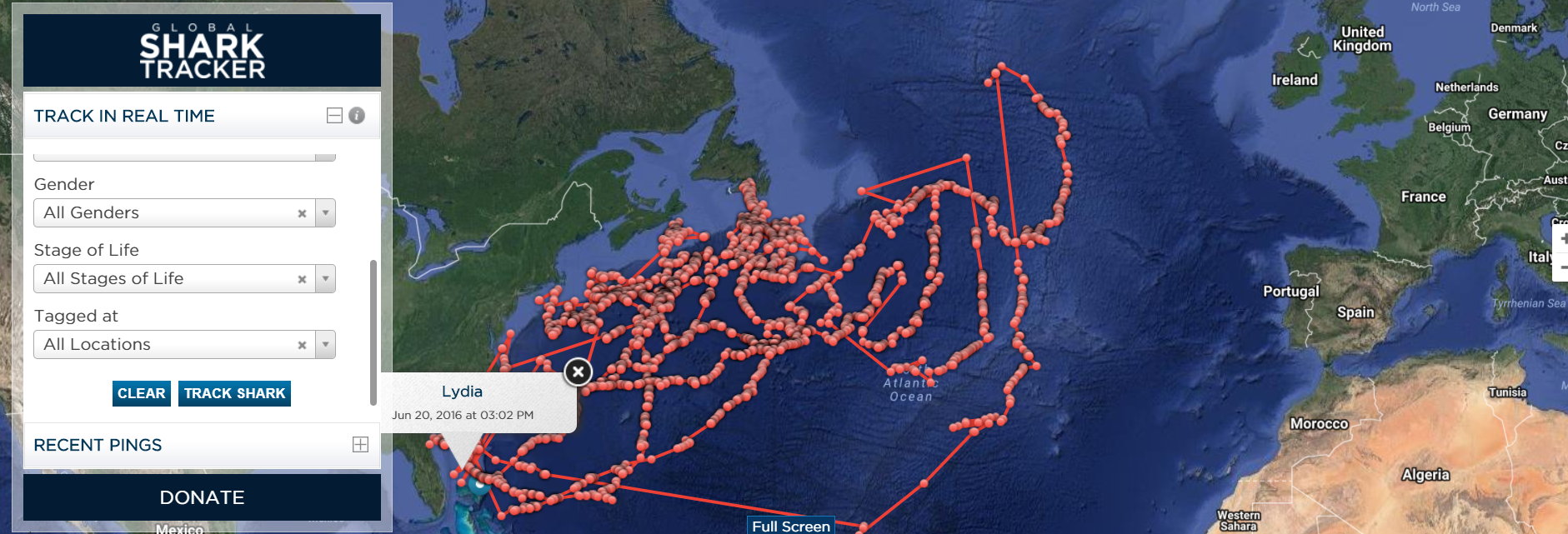
- Great Whites are strangely docile creatures, they may appear menacing but they are generally not a threat to you in the water, provided you remain calm and don’t display signs of distress they will more than likely ignore you, most Shark attacks occur from misidentification.
It has been theorised that Great White Sharks are able communicate to one another through the emittance of low frequency sounds, and their range of hearing is superior to our own, their hearing is in fact so finely attuned that they are able to pick up miniscule changes in the water current which allows them to maintain their balance when swimming.
They are part of the Mackerel Shark suborder which includes Makos and Porbeagles, unlike most fish these Sharks are warm-blooded, this allows them to regulate their body temperature, this enables them to live in both cold and temperate waters.
On average their Brain weighs only 40 grams, despite this small brain to body ratio they have been observed to display intelligent behaviours such as pre-planning attacks, learning from failed attempts, and developing their hunting skills with age.
Final Thoughts
Personally, I wouldn’t get in the water with a Great White Shark, but I can see why some people voluntarily do it, to share the water with one of nature’s greatest predators whilst also in the back of your mind knowing that if the Shark wanted to, it could kill you quite easily, the experience must be both awe-inspiring and exhilarating.
Their ability to adapt and thrive across a global territory is nothing short of remarkable; they have remained relatively unchanged for over 10 million years and will likely continue this trend, even with the changing climate.
The main threat to their existence comes from us, how we handle the Oceans in the coming decades regarding fishing techniques, plastic disposal and the handling of chemical contaminations will ultimately decide the future for this magnificent animal.
Content Sources

If you Enjoyed this article feel free to check out some of my previous editions of Amazing animals.
- The Hyena
- The Harp Seal
- The Clown Fish
- The Greater Bird of Paradise
- The Reindeer
- The Three-toed Sloth
- The Hippopotamus

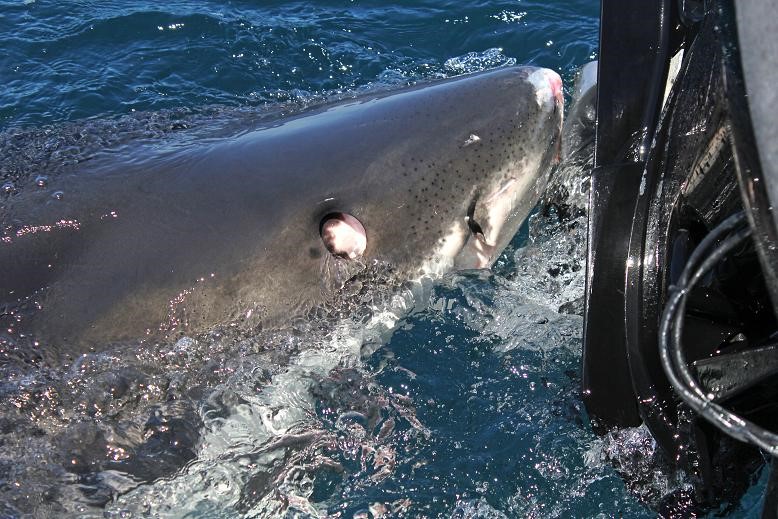
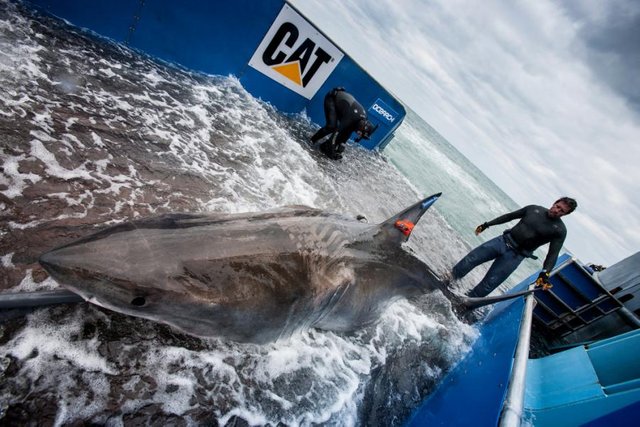
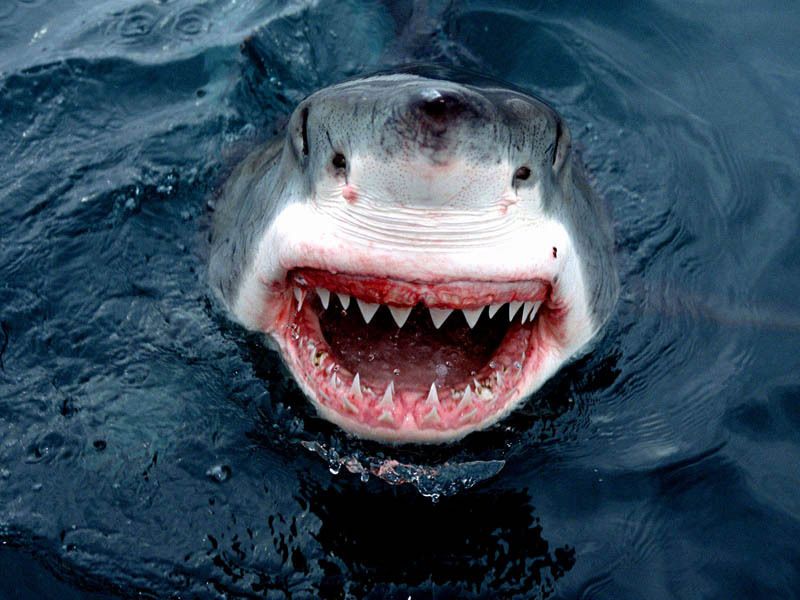

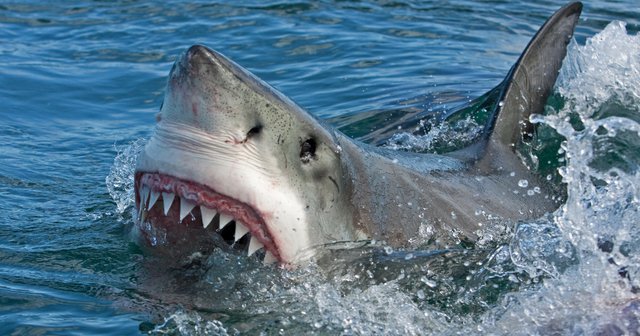



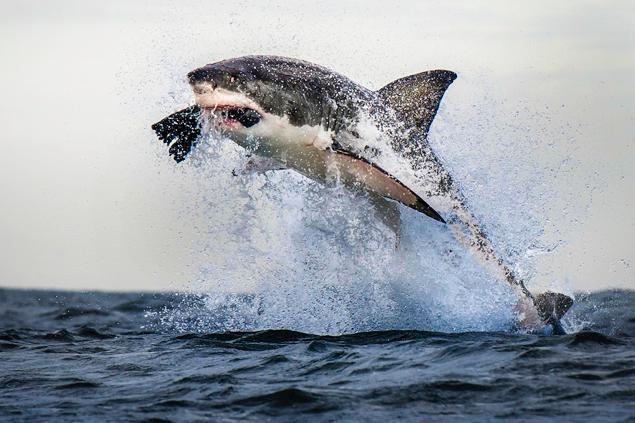
The Great White Shark....
Did I just hear you say, they earned a bad reputation from movies?? Mahn! They are really bad. Sharks are cold blooded killers, although I know the great white shark is partially warm blooded but all the same, they are killers.
And as for the jaw. It looks too scary in the shark's mouth. It's nice you uploaded the other one at least that looks mild...
Nice one though, I just thought you were going to say you had it in your zoo, Lol...
killer like million other animals and humans. that´s life
very useful information about the white shark, thank you!
in photos the shark looks very frightening, and it can be seen that it is set up unkindly
Amazing well detailed article. It will be very good if people get more responsible in preserving these natural beauties by not disturbing them. The curiosity of people sometimes end up in hurting them which i feel should not happen. Thanks for the article.
A very knowledgeable post indeed , this post will definitely help in the conservation and shed light to protect these magnificent beasts .
That was valid information i like it.I always loved the nature and all that ,shark are consider as danger because of their human attacks and thats why nobody loves but as a nature speice we should not harm them and not make them furious.and one more thing i see didnt see the baby shark or them ina pack ,have you any information about it?
Not a lot is known about their social behaviour which is why scientists are tagging them to try and get an idea. In particular where they go to breed. In terms of Mum and baby, once the baby is born it is left to its own devices and Mum or dad have no involvement in its upbringing. I hope this answers your question :)
Terrible dangerous animal...
I don’t understand your comment.. an animal is only “dangerous” when it is provoked. As for being terrible, I feel bad that you feel that way about an incredible animal like this. I wish you could see the animal for the way I wrote and intended.
Amazing post!
I admire the amount of time you put into this as I'm a huge lover of any and all things marine science.
this is called countershading and is used by a great number of species in the ocean as a defense mechanism as well as an offense mechanism.
Chondrichthyes have 5-7 gill slits, with most having 5 (as you mentioned the great white has).
While great whites are the perfect predator, they are more likely to scavenge for food instead of hunt prey. This is probably due to the sheer amount of energy burned in hunting alone.
Great whites are some of the only sharks to actually breach water for their prey; they have a very distinct attack when feeding technique where they come from directly underneath their prey.
Sorry, just wanted to add a little to your excellent post. :)
I don't like cuddling with sharks ... who else does not?
Resteemed to over 8800 followers and 100% upvoted. Thank you for using my service!
Send 0.100 Steem or 0.100 Steem Dollar and the URL in the memo to use the bot.
Read here how the bot from Berlin works. News you will find under the hashtag #resteembotnews.
Please help us grow and use our link to trade #IOTA #BTC #ETH and a lot of more at one of the biggest exchanges. https://www.binance.com/?ref=10230705
@resteem.bot
Speechless
Class
Amazing picture
how many colour amazing shark
I just love reading and watching programs on nature and animals. What a great job you did on this. <3